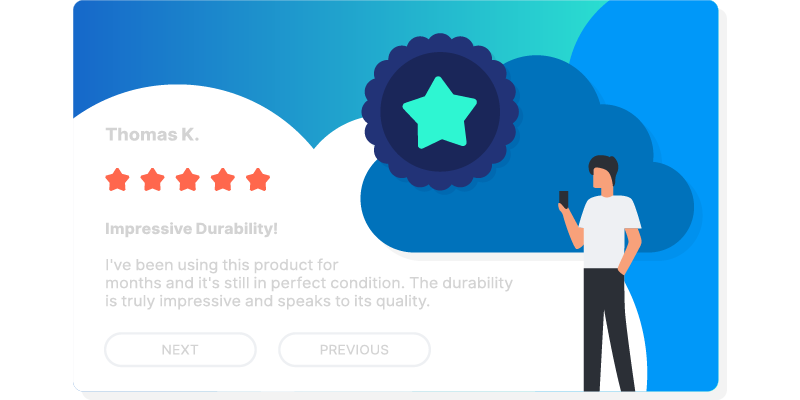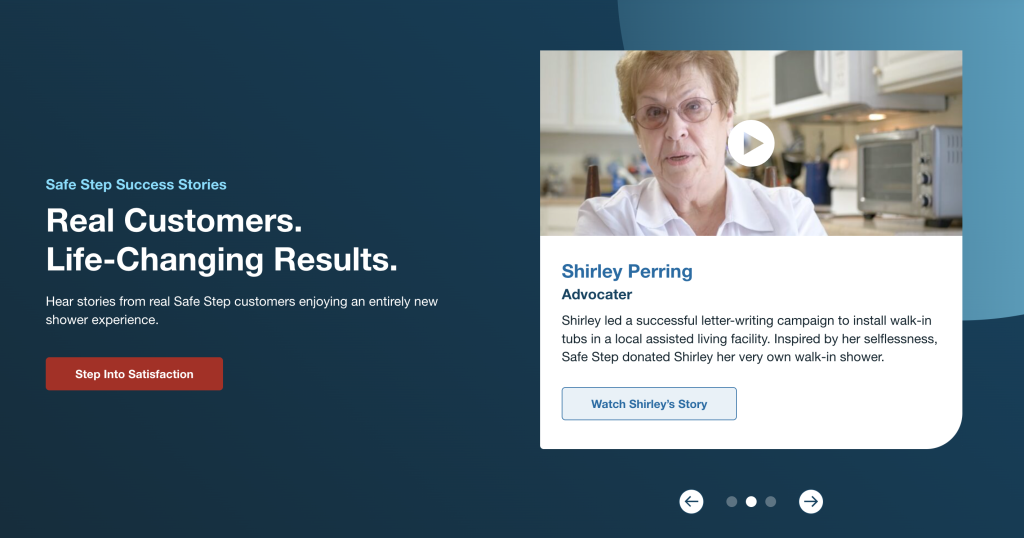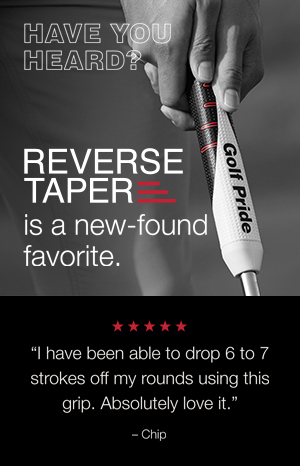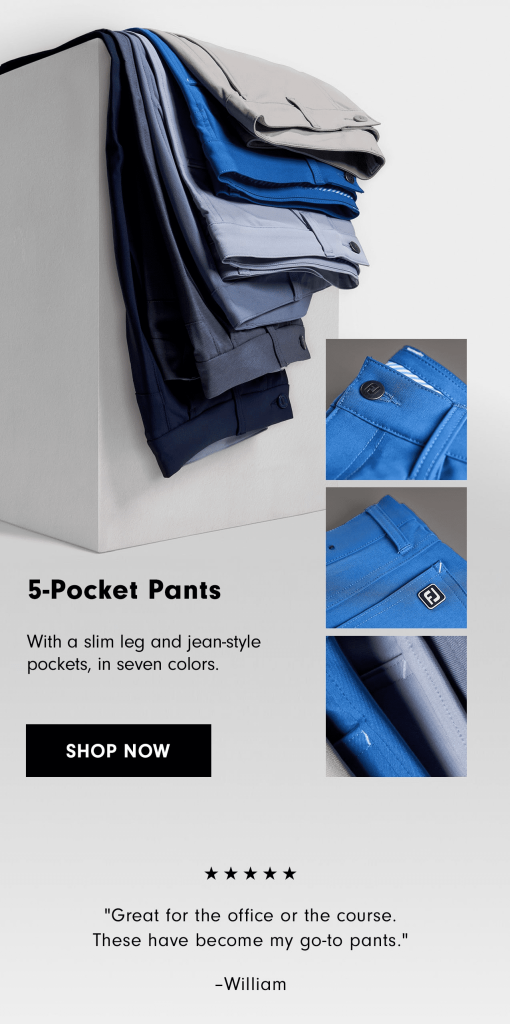Customer testimonials are more than just words on a page. They serve as powerful trust signals, establishing social proof and building credibility and rapport with your audience.
The value of hearing directly from satisfied (or dissatisfied) customers cannot be overstated; their experiences and preferences provide unique insights that can diversify and strengthen your brand’s marketing messaging.
However, the impact of testimonials hinges on authenticity. It is essential to recognize and uphold the integrity of customer testimonials and use them properly in your campaigns. In this blog, we’ll explore the importance of authentic testimonials and how to use them.

3 Types of Testimonials
Customer testimonials come in various forms, each offering distinct advantages depending on your marketing strategy and preferred content channels. While there is no one-size-fits-all approach, understanding how each type of testimonial works can help you leverage them effectively throughout the customer journey.
Where you can share testimonials is almost endless—on your website, newsletter, sales emails, product or service brochures, landing pages or checkout pages, in paid campaigns and anywhere else you wish to bring in a unique perspective only a customer could share.

Online Reviews (Google, Yelp, etc.)
Written online reviews provide social proof directly from customers on platforms like Google, Yelp, the Better Business Bureau and more. These testimonials are easily accessible and offer credibility, as they are typically shared freely without any brand influence or monetary gain.
User-Generated Content (UGC)
User-generated content includes testimonials shared by customers on social media platforms such as TikTok, Facebook, X, Instagram, Reddit and others. UGC offers a quick but in-depth look at someone’s experience of your brand and is particularly valuable for its authenticity, as it often originates from spontaneous, genuine customer enthusiasm. They are highly persuasive because they allow potential customers to see and hear real people interact with your brand.
Incentivized Reviews
Incentivized reviews are given by customers who receive a perk or a reward in exchange for their review of a brand or product. These rewards can be in the form of discounts, gift cards, free products and more, and are used by businesses to encourage customers to share their experiences. This marketing tactic works in tandem with using brand loyalists or influencers (or a mix of both) to further amplify your brand.
Incentivized reviews should be used sparingly to avoid cheapening the authenticity and genuineness of your business. Plus, incentivized reviews may lead to reviewers giving biased or exaggerated feedback in return for a reward, which can potentially mislead customers. The Federal Trade Commission (FTC) requires reviewers to disclose when their review was incentivized, adding an extra layer of protection for consumers.
A Word to the Wise: Fair Use and the FTC’s New Rule
Keep fair use best practices in mind when sourcing testimonials for your content. These will vary depending on how and where you use the testimonial and your geographic location.
For example, if you’re running advertisements or adding quotes to your website sourced from a Google review, you must first receive permission from the individual. To repost a customer’s Instagram story on your business page, simply tag them or share as-is. Remember to be sensitive to people’s privacy and use only their first name or first name and last initial when sharing quotes.
Testimonial accuracy is also crucial—as of August 2024, the Federal Trade Commission announced a final rule taking action against businesses using fake reviews (including incursion of fines and civil penalties) and prohibiting businesses from buying positive or negative reviews.
Why They Matter: How Testimonials Can Impact Your Marketing Campaigns
Testimonials can significantly impact your marketing campaign by validating your brand’s promises through real customer experiences. They can drive tangible results like increased engagement on organic social posts, higher conversion rates and increased sales. In fact, testimonials on sales pages can increase conversions by over 34%, according to studies by WikiJob and VWO.

Testimonials work effectively at different stages of the funnel on both paid and organic channels—from generating initial interest and helping convert people with high purchase intent to fostering deeper connections with existing customers.
Additionally, they contribute to intangibles, such as enhanced brand trust and deeper product insights. By integrating testimonials into your campaigns, you can create a compelling narrative that not only attracts new customers but also strengthens relationships with those who have already made a purchase, ultimately driving long-term success.
Best-in-Class Examples of Testimonial Marketing
Across industries, from big corporations to local, family-owned businesses, testimonials hold weight for audiences. Below are four examples of how companies use their customer stories to move the needle.
Example 1: Mint Mobile’s “Real Customer Stories” Video Ads
Ryan Reynolds’ wireless phone service, Mint Mobile, brings a fun twist to the “real customer stories” format in their video ads.
In a short skit, Reynolds plays on the believability of reviews and the skepticism we feel as consumers—he introduces a customer on screen for a short Q&A about Mint Mobile, pretending not to believe his real name. This is followed by a new promotion announcement and a final joke. Love it or hate it, this style of marketing aligns with Mint’s stated message of doing the opposite of big wireless.
Example 2: Storytelling on Landing Pages
In this simple and effective example, TriMark Digital leveraged customer success stories on a landing page promoting Safe Step’s line of walk-in showers. The reviews are strategically placed to complement product information, user discovery and other trust signals such as accreditation and certification badges.

Given the sensitive nature of walk-in baths and showers, which are designed for seniors and individuals with mobility limitations, our approach used careful, concise language and a mix of video testimonials and quotes (not pictured). An easier-to-implement version of using testimonials on your website would be a carousel of quotes or even a pull quote on a webpage without additional styling or video components.
Example 3: Product Promotion Using Customer Reviews
To help drive sales to their new putter grip, TriMark Digital worked with Golf Pride to create an email highlighting recent reviews. The strength here is specificity—rather than using general quotes about the brand, we leveraged detailed descriptions of how people use this new putter grip, what they like about it and how it has improved their golf game.
Alongside of the quotes, we included clear CTAs in the email banner and after the reviews to make it easy for readers to shop without distracting from the main message: sharing customer perspectives.
Example 4: Pairing Testimonials With Product Recommendations
Do you want to give your customers a first-hand look at why one product may be better for them than another? Rather than serving ads and sending emails that just list your product’s features and benefits, bring in customer reviews to add variety and give people a deeper reason to believe.
In this FootJoy email promoting a new line of golf pants, customer reviews integrate seamlessly with a short tagline and detail imagery to give readers a quick-hitting understanding of the product and its purpose. Compared to the examples above, notice how in this case customer testimonials are not front and center, but serve to complement the content.
Elevate Your Marketing Campaigns
Customer testimonials are one of many tactics you can use to tell your brand’s story and connect with customers. Read more about marketing strategy on the TriMark blog, from leveraging seasonality in paid media to staying up to date on Google’s latest algorithm changes.







